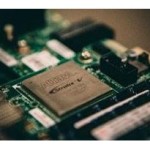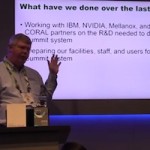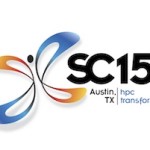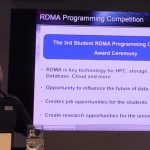“Analytics applied over complex, many-to-many data relationships hit the ‘Graph Cache Thrash’ bottleneck and grind to a halt, failing to deliver good performance or to operate at scale,” said Brad Bebee, SYSTAP CEO. “GPU hardware provides a compelling performance increase for data-intensive, predictive analytic applications. With Blazegraph and our new GPU products, users can harness the computing power comparable to what was only available from supercomputers, such as a Cray, at a fraction of the cost.”
Is the Future CPU+GPU or CPU+FPGA?
“At SC15, IBM, in turn, announced new offerings centered “on the tight integration of IBM’s Power processors with accelerators.” But it was an announcement about IBM’s interest in FPGAs that attracted attention. It has concluded a multi-year strategic collaboration with Xilinx to develop FPGA-enabled workload acceleration on Power-based systems. Through a private commercial agreement as well as by collaboration through the Open Power Foundation, the two companies are teaming up to develop open acceleration infrastructures, software, and middleware.
Video: Job Launching – Keeping Pace with Expanding Complexities
Bill Nitzberg from Altair presented this talk at the Intel HPC Developer Conference at SC15. “Everyone benefits from faster, more resilient infrastructure – the small, the medium, and the really big. This talk will cover how job management software like PBS connect applications with system resources and present optimal paths for application execution.”
Podcast: Societal Impact of Earthquake Simulations at Extreme Scale
In this TACC podcast, the Thomas Jordan from the University of Southern California describes how he uses the computational resources of XSEDE, the Extreme Science and Engineering Discovery Environment, to model earthquakes and help reduce their risk to life and property. Dr. Jordan was invited to speak at SC15 on the Societal Impact of Earthquake Simulations at Extreme Scale.
Buddy Bland Presents an Update on the Summit Supercomputer
Buddy Bland from ORNL presented this talk at SC15. “Summit will deliver more than five times the computational performance of Titan’s 18,688 nodes, using only approximately 3,400 nodes. Each Summit node will contain multiple IBM POWER9 CPUs and NVIDIA Volta GPUs all connected together with NVIDIA’s high-speed NVLink and a huge amount of memory.”
SC15 Announces Attendance Record & Awards Roundup
SC15 has released results from the Supercomputing conference in Austin. This year, the conference drew a record 12,868 attendees, including 4,829 who registered for the six-day Technical Program of invited speakers, technical papers, research posters, tutorials, workshops and more.
Video: Bryan Catanzaro on HPC and Deep Learning at SC15
In this video from SC15, Bryan Catanzaro, senior researcher in Baidu Research’s Silicon Valley AI Lab describes AI projects at Baidu and how the team uses HPC to scale deep learning. Advancements in High Performance Computing are enabling researchers worldwide to make great progress in AI.
Video: Working Together on Frameworks for HPC Systems with OpenHPC
“OpenHPC is a collaborative, community effort that initiated from a desire to aggregate a number of common ingredients required to deploy and manage High Performance Computing Linux clusters including provisioning tools, resource management, I/O clients, development tools, and a variety of scientific libraries. Packages provided by OpenHPC have been pre-built with HPC integration in mind with a goal to provide re-usable building blocks for the HPC community.”
Video: Introduction to the HPC Advisory Council
In this video from SC15, Brian Sparks from Mellanox presents an overview of the HPC Advisory Council. “The HPC Advisory Council’s mission is to bridge the gap between high-performance computing (HPC) use and its potential, bring the beneficial capabilities of HPC to new users for better research, education, innovation and product manufacturing, bring users the expertise needed to operate HPC systems, provide application designers with the tools needed to enable parallel computing, and to strengthen the qualification and integration of HPC system products.”
Video: OpenMP and the Intel Compiler
In this video from the Intel HPC Developer Conference at SC15, Kent Millfield from TACC presents: OpenMP and the Intel Compiler. “The OpenMP standard has recently been extended to cover offload and SIMD. The Intel compiler has provided its own implementations of offload and SIMD for some time before the extensions to the OpenMP standard was approved, and that standard is still evolving. This talk describes what you can do with the Intel compiler that you cannot yet do in OpenMP including some where gaps are getting closed soon, and some which will remain for a while. The talk will also highlight where things are done differently between the language interfaces of the Intel compiler and the OpenMP standard. The talk is relevant both to those who seek to port existing code to the OpenMP standard, and to those who are starting afresh.”













